Joint Replacement Surgery Q&A
In the third and final blog of my Q&A series, below are the most common questions I’m asked about joint replacement surgery, many focusing specifically on the knee. At the Leone Center for Orthopedic Care, we emphasize diagnosing the etiology leading to painful knees or hip so that an effective treatment plan can be created to help solve it. We’ve learned that a well-informed patient not only has a better experience but typically a faster recovery. While we don’t necessarily endorse the philosophy of “no pain, no gain,” we strongly believe that knowledge is power. We encourage and help our patients to become more educated about their conditions. Our goal is to provide the best results for our patients so they can return to active, pain-free lifestyles. You can read further about arthritic joints and joint pain and deterioration in the previous two Q&A blogs.
What is a healthy diet before joint replacement surgery?
Multiple studies have shown that the incidence of complications including infection and delayed healing is directly related to nutritional status. Many people who are remarkably overweight actually are malnourished. Therefore, optimizing the nutritional status pre-operatively is very important. We encourage a diet rich in fruits, vegetables, lean protein, such as chicken or fish, and whole grains. Our bodies need the basic ingredients to build up our blood levels preoperatively and to heal tissues after surgery. I also ask my patients to take iron and vitamin C pre-and post-operatively. This is just as important for hip replacement surgery.
What should I bring to the hospital for my joint replacement surgery?
- A complete list of any medications you currently take, including dosage
- Insurance information
- A list of any allergies you might have
- A copy of your living will
- Footwear with a rubber sole and closed heal
- Loose, comfortable clothing such as a workout outfit or tee shirt and shorts
- Toiletries
What will my incision look like after knee replacement surgery?
The incision is longitudinal and placed over the front of the knee. The underlying tissue has been closed with sutures that resorb internally. There are underlying anatomic layers that must accurately be repaired.
After a knee replacement, the skin typically is closed with staples or sutures. I choose to close with a single subcuticular running suture. This is meticulously weaved through the tissue just under the skin. Once closed, the suture isn’t visible and the incision looks like a fine line. I believe this technique produces a better seal and may diminish the risk of infection. I also think cosmetically it looks much better. The subcutaneous stitch is removed two weeks after surgery, but most patients will start showering four days post-op.
What equipment is used for physical therapy after knee replacement surgery?
Minimal equipment: a walker and cane initially. A stationary bike and use of a pool after a couple of weeks are valuable but not a requirement. Ice can be delivered “old school” with a bag or we use a “fancy cuff” attached to an ice chest that circulates cold water. Occasionally, a support stocking or an ace wrap is appropriate. Sock aids and grabbers also are beneficial to some and patients are instructed in their use. Most important is perseverance and the desire to get well.
How should I use a CPM machine after knee replacement surgery?
CPM stands for “constant passive motion” and is a machine that is designed to passively move the knee after surgery. Although traditionally CPM machines were used routinely after knee replacement surgery with the hope that patients would achieve a more satisfactory range of motion sooner, many studies have not demonstrated this and they are used rarely now. Unfortunately, a number of studies have also demonstrated an increased incidence of some complications. I seldom encourage the use of a CPM machine.
In my experience, when total knees are optimally balanced and aligned then patients regain their mobility and motion quickly. I emphasize early therapy and walking. Typically this occurs on the very same day as their surgery. Early mobilization also helps increase circulation, helps decrease the risk of a blot clot and protects the skin from breakdown. Early motivation also is psychologically positive and another reason why more patients are eager to leave the hospital and go home the day after surgery. Once again, this applies to both hip and knee replacements.
How should I care for my wound after knee replacement surgery?
The incision is closed with a running suture, as opposed to staples. This produces a superior seal and may add extra protection against infection. I then encourage my patients to shower three or four days after their surgery. A unique sterile dressing is applied in the operating room that allows the incision to breathe and will remain in place for several days after surgery. In the operating room a soft cotton dressing also will be applied to decrease swelling and pain. This is removed the morning after surgery. A fluid-filled “bladder,” called a Polar Care, that circulates cold water, also is placed over the surgical dressing but underneath the cotton dressing to further reduce swelling and pain. Patients will use the Polar Care through the hospital stay and at home.
Why does it take so long to recover from knee replacement surgery?
Historically, patients who have total knee replacements (TKR) have taken longer to fully rehabilitate than those having partial knee and total hip replacements. Also, there tends to be more associated pain.
On a very positive note, by adapting some exciting new technologies including the use of pressure sensors, robotics and computers, we’ve become much more precise in balancing and aligning a new knee. We combine this with our approach to preempt pain using both a multimodal and scheduled regime. Clinically, I’m seeing most patients getting well much faster, requiring less formal PT and returning to their active lives sooner. I’m happy to say that most of our TRK patients, like my total hip and partial knee patients, return for their six-week post-operative visits and are doing so well that they don’t even need to return until the routine one-year visit.
What exercises should I do prior to knee or hip replacement surgery?
Being in the best shape possible prior to joint replacement surgery helps with a faster recovery. Please click on these links to see the total hip and knee replacement booklets posted on The Leone Center for Orthopedic Care Website. Both are full of informative tips, including what exercises to do prior to and post-surgery:
What exercises can I do after knee or hip replacement surgery?
Walking and normal movement during typical life activities is very important and helps rehabilitate the new knee. I emphasize walking. The physical therapist will teach specific exercises designed to help regain range of motion and improve strength. Exercising on a stationary bike also is valuable. Raising the seat can improve extension and lowering the seat, flexion. I encourage my patients to start walking in a pool or swimming after two weeks, once the suture is removed. Frequent, gentle and persistent exercises are more effective than forcing exercise once or twice a day.
How should I climb stairs after knee or hip replacement surgery?
Most patients do not have difficultly climbing stairs immediately after their surgery. Hence, if they have stairs that they must navigate as soon as they get home, they’ll be fine. They are taught to ascend with the non-operated and descend with the operated leg. An easy way to remember this is: “Up with the good, down with the bad.” I encourage my patients to go up and down naturally as soon as they feel comfortable. Using the bannisters is perfectly okay.
Can I ski after a knee replacement?
Many patients have knee replacement surgery with the goal of returning to sports activities after they’ve healed. Fortunately, most are able to do so but each case must be assessed on an individual bases. I’ve cared for many people who after partial or total knee replacement have returned to the activities they were passionate about prior to surgery, including downhill skiing, tennis, squash, hockey and more. I recommend against a lot of long-distance jogging and heavy weight lifting with their legs. I’ve seen a number of patients who returned to team soccer and who did poorly after just a few years. Whatever sport someone returns to must be approached with judgment and maturity. This also pertains to total hip replacements.
We thank you for your readership. If you would like a personal consultation, please contact our office at 954-489-4575 or by email at LeoneCenter@Holy-cross.com.

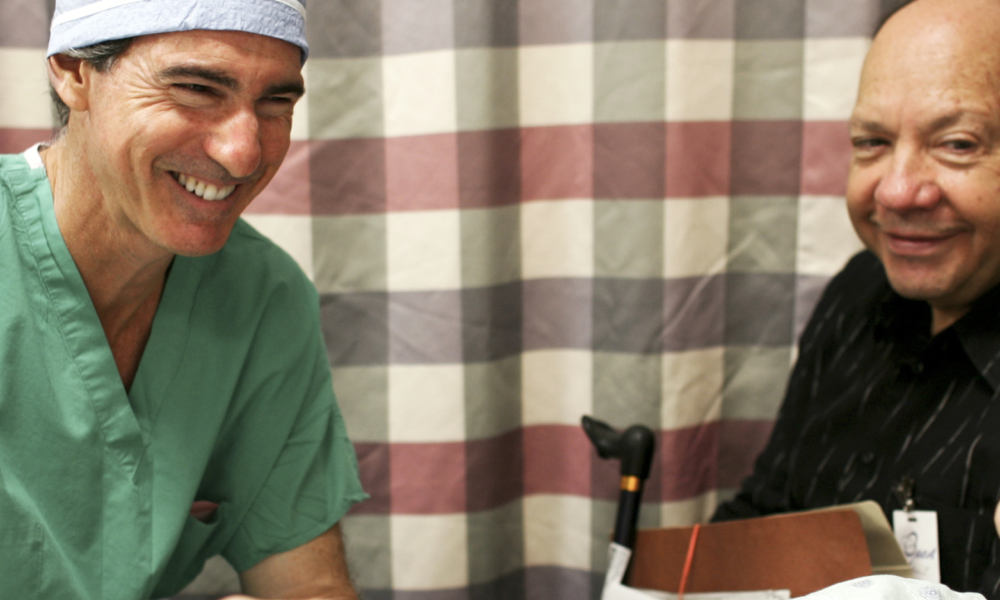
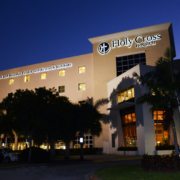
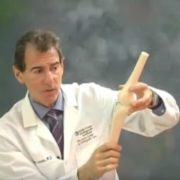
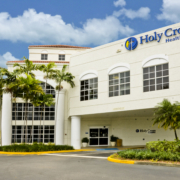
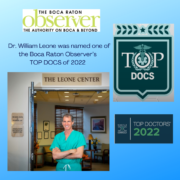
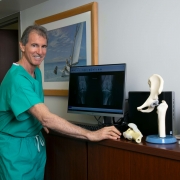
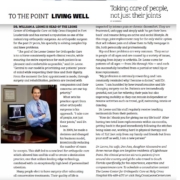
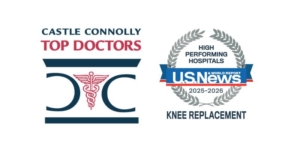
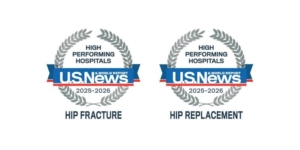
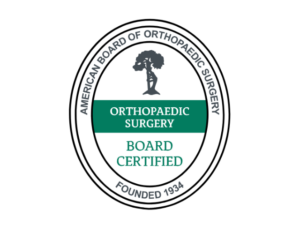


“A Joint Replacement Surgery Q&A” is really nice post.I got answers for many questions. Thanks for this post.
Thanks for your answer about which equipment is used for PT after a knee replacement. It is very comforting to know that a walker, cane, and stationary bike are all that will be needed to make a complete recovery. I would imagine that choosing a competent and experienced surgeon would be a good way to make the recovery process even easier.